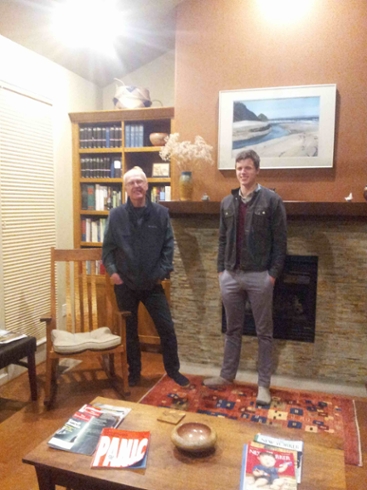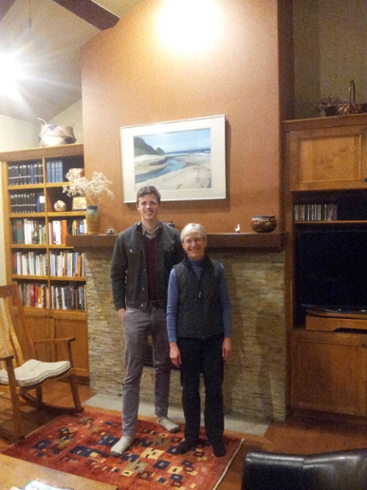Growth Management Department of Bend, Oregon: Philip Stallworth, Winter Shadow 2016

This past winter I had the opportunity to stay with two retired land use professionals, one a Reedie, and shadowed a number of employees at Bend’s Growth Management Department. Susan Brody, the Reedie, had formerly worked as the Director of Eugene’s Planning and Development Department, and as the Director of Oregon’s Department of Land Conservation and Development. Her husband, Al, is a retired land use attorney who had his own practice. Though they only moved to Bend two years ago, they are both active community members. As members of (different) Technical Advisory Committees, they each work closely with the Growth Management Department and project manager Brian Rankin to help expand Bend’s Urban Growth Boundary.
I applied to this externship because I was interested in a career that used technical skills and analytical thinking to develop impactful public policy. Discussions of Portland’s housing crisis and gentrification problems hinted that planning might be one such career. My experience in Bend unambiguously confirmed that hunch. The people I shadowed were dedicated to crafting the best Bend they (or more accurately, the public) could imagine, while working within the constraints of a municipal department.

When I arrived, the department was nearing the end of a two year long Growth Boundary Expansion project. This project, which had already been remanded once, can be a bureaucratic nightmare if it is not organized carefully, with constant input from diverse, and often oppositional, invested parties. One highly dissatisfied group can drive the project off course. This delicacy necessitated the construction of a complex organizational structure that included three technical advisory committees, a steering committee, the growth management staff, landowners, and consultants. The person I principally shadowed, Brian Rankin, constructed the organizational structure and continues to lead the project.
Prior to Arriving in Bend, Susan and Al sent me around 100 pages of preliminary reading material. It covered both the intricacies of a TAC meeting and gave motivation for the UGB project. Upon arrival, I thought I had been given a comprehensive picture of the process. Boy was I wrong. The first night I was given a binder with hundreds of pages of materials that only constituted a small portion of the total materials for the UGB expansion project. It had information on statewide policies, local mandates, and this particular project. I was shocked, needless to say. Not because I was intimidated by the amount of reading material, but rather because these two people, who were neither staff members nor long term residents of the community, showed so much dedication to the public process.
As previously mentioned, the department I shadowed was engulfed in the expansion project. I saw meetings between staff and consultants, and spoke with each staff member individually. I was struck by the variety of roles necessary for the successful implementation of a project. The process was both political and highly technical. The consultants ran simulations for each proposed expansion and drew up new maps, while the staff did both technical work and acted as an intermediary between the public, the steering committee, and the consultants. Most of Brian’s work consisted of trying to bring together diverse viewpoints to construct an agreeable plan. By working with many different community leaders, he hopes to diminish the potential for public backlash. The community leaders will hopefully be content enough to advocate on behalf the plan.
I loved my shadow in Bend. It affirmed my favorable suspicions about planning and land use. The people I met were all friendly, interested, and dedicated. I had been wary about pursuing planning prior to the shadow, but now I am confident it would be a fun and fulfilling career.
Tags: winter externship, winter shadow, development, planning, nature, city government, policy, public, nature, urban
